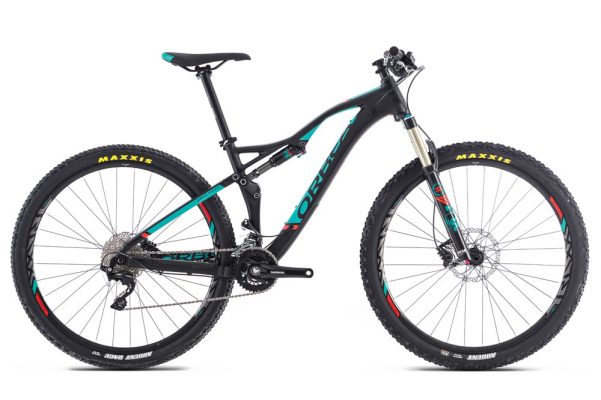With wider Boost hubs, frame and fork, the Occam TR H30 is a solid and stable package that goes exactly where you point it
Orbea Occam TR H30 (2016) review
Based in the Basque region of Spain, and cooperatively owned by its employees, Orbea is probably best known in the UK for its 160mm-travel Rallon enduro bike. No surprise, then, that the new 29in-wheeled Occam TR (Trail) tested here boasts modern slack geometry, and shares some of the Rallon’s design features, if not its ultra low-slung BB.
Similar to Devinci’s Split Pivot and Trek’s ABP, Orbea’s suspension design uses a concentric pivot around the rear axle. In a nutshell, this layout means that the 120mm-travel Occam TR remains more active and efficient when the rear brake is applied, with less skipping over bumps.

To ensure the rear suspension is even more potent, the upper linkage uses an extender yoke to clasp the lower eyelet of the shock. This design, pioneered by Specialized and found on the Camber, allows the suspension to glide on a full complement of bearings — reducing friction and providing maximum sensitivity.
The Occam TR gets an ultra-wide 92mm press-fit BB shell and the 148mm Boost rear axle standard, where the broader rear stays and wider hub spacing create a significantly stiffer rear end. This ‘wider is better’ principle is reinforced by the front triangle, which gets a broad top tube that wraps around the shock for maximum stiffness.
Suspension
A relatively short stroke, custom-tuned Fox Float shock controls the 120mm rear suspension. The Occam often feels like it delivers much more travel than claimed. This makes it great at ironing out roots and medium sized rocks, but there’s very little progression or ramp-up, so it’s all too easy to bottom out on low-speed compressions and G-outs.

Concentric pivot helps suspension performance under braking
Up front, the Fox 32 Float fork also gets the Boost treatment, and the redesigned chassis and wider 110mm axle spacing really improves stiffness. Packing the latest generation FIT4 damper, the Fox fork isn’t lacking in control either — it’s smooth, it’s sensitive to even the smallest bumps and it doesn’t dive on steep descents. Basically everything you want from a trail fork.
Components
With the wider hub flange spacing that goes hand-in-hand with the Boost dropout spacing, the Mach 1 Traxx wheels feel very stiff and solid. Unfortunately, they are also significantly heavier than other wheels in this test, so the Occam felt a bit lazy getting up to speed. Maxxis Ardent’s are great fair-weather tyres, but even with the bigger volume 2.4in up front, they didn’t inspire confidence.
None of the bikes in this test came equipped with a dropper post, but the Occam’s Digit post makes a great halfway house. A custom seat clamp combined with adjustable limit screws on the post mean that, with a little practice, you can easily drop or raise your saddle on the hoof.

Rear suspension struggles when the trails gets rough and lacks support
In the stop and go departments, it’s tough to nit-pick over the no-nonsense mix of Shimano gear — the SLX/XT Shadow Plus drivetrain quietly provided a versatile range of gears and the Deore brakes always supplied powerful, controlled braking.
Performance
With wider Boost hubs, frame and fork, the Occam TR H30 is a solid and stable package that goes exactly where you point it. So it’s great at bombing through rougher sections of trail, like weather-beaten bridleways, and the bike always feels stable and planted on steeper terrain. The suspension response is also very predictable, with a neutral ride quality and no unwelcome surprises.

Boost hubs increase wheel stiffness and help steering accuracy
At over 31lb, however, it’s the heaviest bike on test and won’t win many awards for outright acceleration. This extra weight is most evident while climbing, but it makes the bike more difficult to lean over in corners too. Yes, the supple suspension action and overall stiffness keeps the Occam bowling along once up to speed, but it’s hard to inject pace on short, punchy climbs or when exiting tight turns.

Verdict
Orbea’s Occam TR is easy to live with as a riding partner. The sleek alloy frame feels solid and dependable, and with its 29in wheels and laid-back geometry, you always feel like the Orbea’s got your back, even on really rough and rocky trails. The Spanish brand has also future-proofed the Occam by incorporating the latest Boost standards, which should help look after your wallet for longer too. It’s not perfect though. The Fox shock lacks sufficient support — even if it allows the bike to maintain speed over rougher terrain — and the heavy wheels make the bike feel a little reluctant to get moving.
















